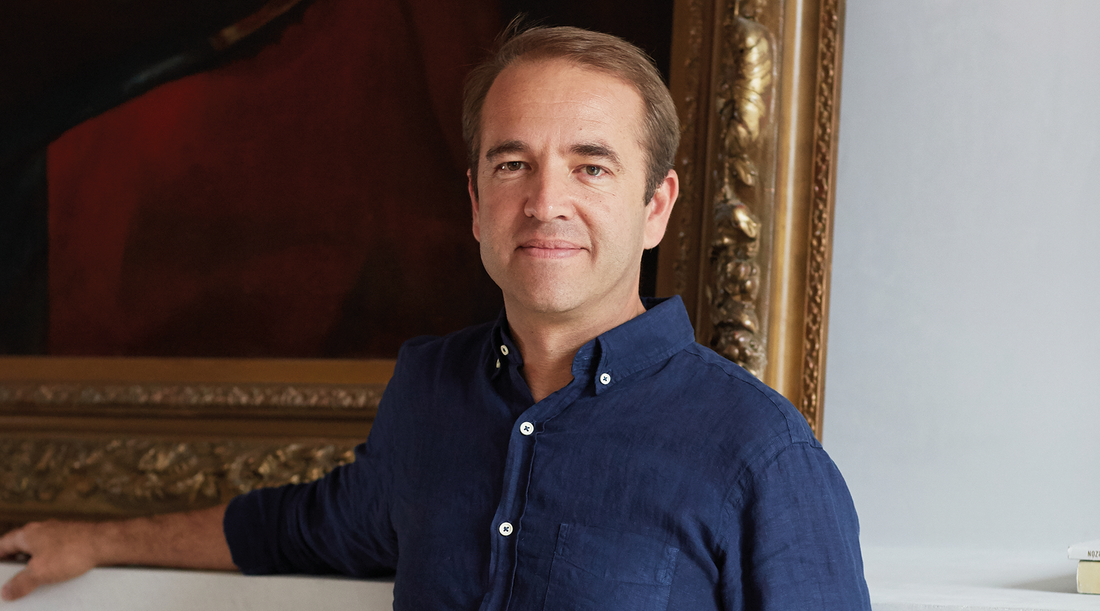
João Rodrigues, founder of the Silent Living project - "Tourism should be a way to enrich the places we live in."
Share
João Rodrigues is the serene face behind Silent Living. A TAP captain in his professional life, it was with a deep desire to offer others a true experience of inner silence and communion with nature that he created this concept, which integrates several unique homes and spaces in Portugal, each with its own identity and purpose. Sustainability, respect for tradition, and simplicity define the meaning of Silent Living, reflecting his own personal journey.
How did the idea of creating the «Silent Living» project come about?
The idea for "Silent Living" arose from a deep desire to offer others an experience of true connection with nature, with themselves, and with the people around them. [...] The project is a way to honor the idea of tranquility and simplicity that has always been present in my life.
«The project is a way of honoring the idea of tranquility and simplicity that has always been present in my life.»
Why “Silent Living” and what does this concept consist of?
The name "Silent Living" came about because many of our guests have told us about the profound silence they experience in our homes. It's not just silence in terms of sound, but an internal silence, a sense of peace that allows for reflection and a deeper connection with the environment and with oneself. The concept is more than simply minimalist design or literal silence. It's about creating spaces where people can stop, breathe, slow down, and fully live in the moment, away from the frenetic pace of the modern world.
What are the different spaces they have and what distinguishes them?
We currently have several unique homes and spaces in Portugal, each with its own identity and purpose. Casas Na Areia and Cabanas No Rio, in Comporta, began as family weekend homes near the sea and river. Casa No Tempo, in Montemor-o-Novo, is an agricultural estate that has been passed down from generation to generation. Santa Clara 1728 in Lisbon, in the cultural neighborhood of Alfama, is where I live with my family. Our most recent project is Casa Na Terra in Monsaraz, which expresses its connection to the waters of the Alqueva River. Each is designed to reflect the environment and local community, emphasizing the materials, culture, gastronomy, and history of the region.
«Regenerative tourism and sustainability are fundamental pillars of Silent Living.»
To what extent did you consider regenerative tourism, sustainability, and concern for local communities when creating this project?
Regenerative tourism and sustainability are fundamental pillars of Silent Living. Our vision is not only to preserve nature, but to regenerate it and restore a healthy balance. We use local materials, work with local artisans and builders, and ensure that our practices are as sustainable as possible, such as using renewable energy and implementing recycling and composting systems. Connecting with local communities is equally important, as we believe that tourism should be a way to enrich the localities we serve, creating job opportunities and valuing local knowledge.
In addition to the houses and Herdade no Tempo, they also have two restaurants, Solo and Ceia. What kind of dining experience can we find in these spaces?
Our approach to gastronomy follows the same principle that guides the entire project: simplicity, but with a deep respect for ingredients and tradition. At Solo and Ceia, we strive to create authentic gastronomic experiences, using the best that the land and sea have to offer. […] Each meal is designed to be a true sensory experience. Both projects are designed to reflect the regenerative agriculture we develop at Herdade No Tempo, which focuses on producing healthy and highly nutritious food while simultaneously saving our planet by sequestering carbon, increasing the soil's water retention capacity, improving biodiversity, and thus combating climate change.
The newest member of the "Silent Living" family is the Santa Fé, a restored boat that now offers cruises on the Tagus River. What does this experience add to your concept?
The Santa Fé is a natural extension of our concept. The boat offers a new way to experience the Tietê River, and its beauty allows our guests to have even more direct contact with nature and the tranquility of the area, in addition to providing a unique experience of leisure and discovery. Boat tours reinforce the idea of slowing down, living in the moment, and appreciating the landscape from a unique perspective.
What audience is looking to experience this concept and your project, and what feedback have you received?
Our audience is quite diverse, but generally, they're people looking for a break from the fast pace of modern life. Many are professionals seeking a haven to rest and reconnect. Others seek a deeper experience, immersing themselves in tranquil spaces that help them slow down and reflect. The feedback we receive is wonderful: people speak of the emotional impact of the experience, the sense of well-being and peace they find in our homes. […]
Is the importance of being present and living the moment fully something you've learned from your personal life for this project?
Yes, without a doubt. The philosophy of Silent Living has a lot to do with my own personal journey. I've always believed in the importance of being present, disconnecting from the outside world, and focusing on the simple things that truly do you good. My own life experience and the way I strive to live a simpler, more focused life directly reflect this project.
The minimalist architecture, the integration with the surrounding nature, the concern for a nutritious diet… Do you consider that luxury lies in simplicity?
Yes, I believe that true luxury lies in simplicity. Luxury isn't about having more things, but about having the right things and knowing how to fully appreciate them. At Silent Living, minimalist architecture aims to create an environment where simplicity and functionality blend harmoniously, without overwhelming the senses. Integration with nature and a focus on nutritious eating are part of this concept of simplicity, as we believe these practices are not only healthier but also more sustainable and authentic.
How do you apply “Silent Living” in your daily life?
In my daily life, I try to apply the same principles of slowing down, connection, and simplicity that I advocate in Silent Living. I strive to live more consciously, paying attention to the little things and valuing what truly matters. I believe that true happiness lies in simple experiences and moments of connection, both with others and with the environment.
«[…] people talk about the emotional impact of the experience […] and the peace they find in our homes. […]»
Text: Carla Martins
Photos: All Rights Reserved
